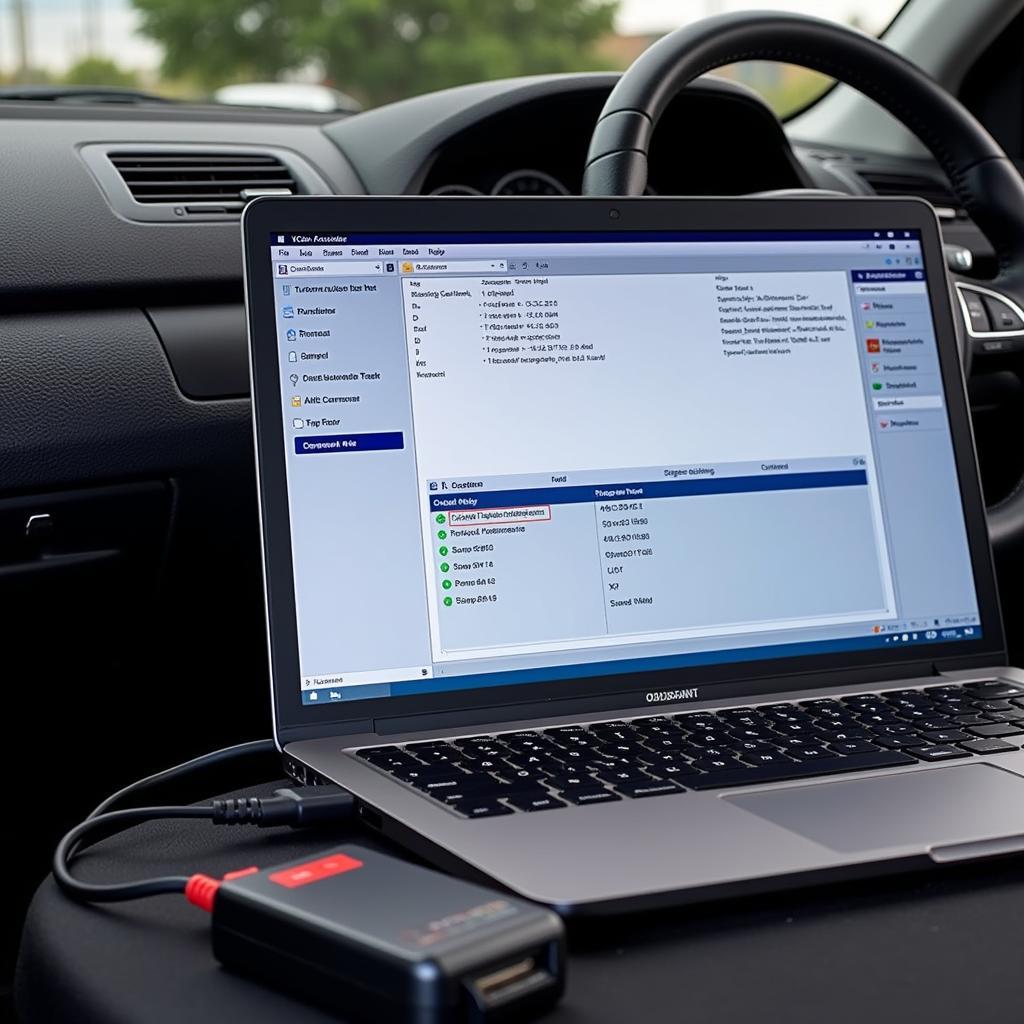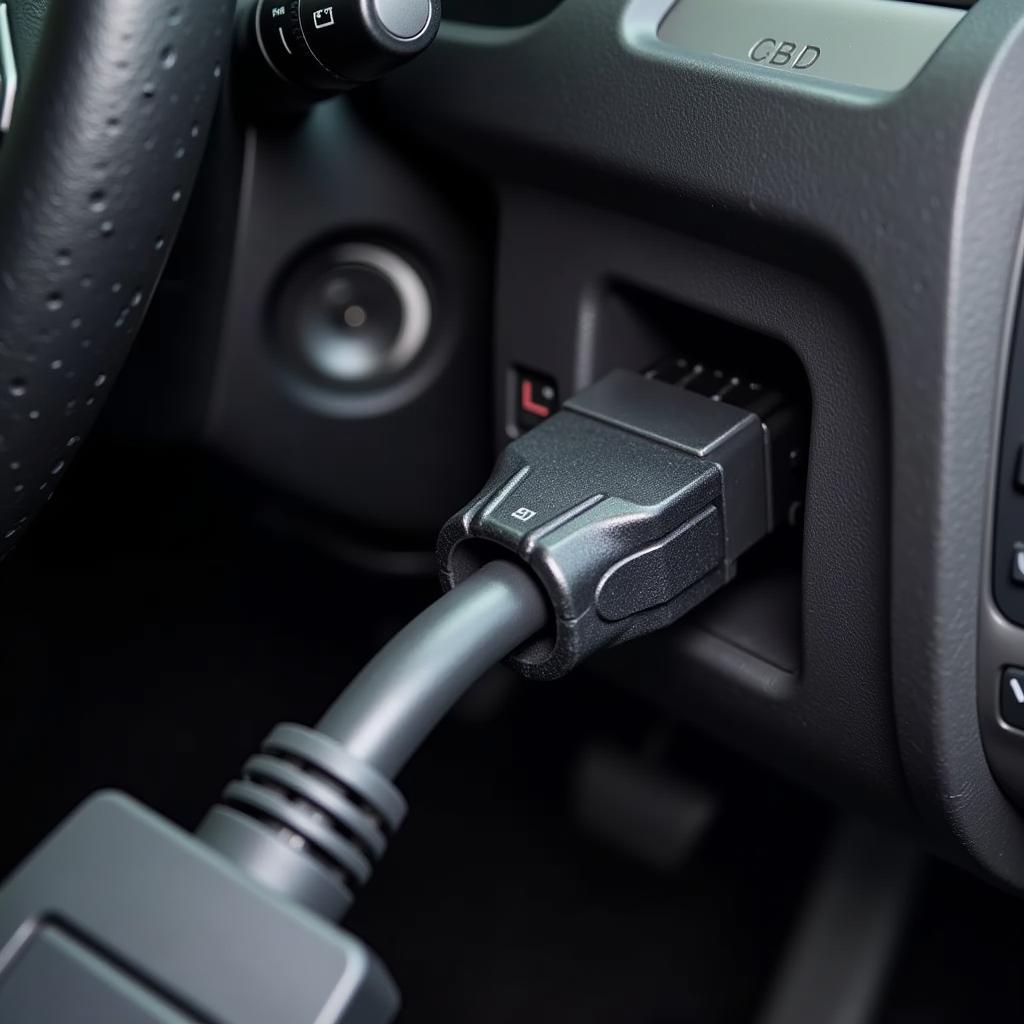The VCDS turbo actuator test is a crucial diagnostic procedure for identifying potential issues within your turbocharged vehicle’s boost system. Understanding this test can empower you to pinpoint problems and avoid unnecessary repairs. This comprehensive guide will delve into the intricacies of performing the VCDS turbo actuator test, interpreting the results, and understanding common related problems. what can you do with vcds lite
Understanding the Importance of the VCDS Turbo Actuator Test
The turbocharger is responsible for forcing more air into the engine, resulting in increased power output. A vital component of this system is the turbo actuator, which controls the movement of the turbo’s vanes or wastegate, regulating boost pressure. The VCDS turbo actuator test allows you to directly control the actuator, assessing its functionality and identifying potential issues such as sticking, slow response, or complete failure.
 VCDS Turbo Actuator Test Setup
VCDS Turbo Actuator Test Setup
Performing the VCDS Turbo Actuator Test: A Step-by-Step Guide
Before beginning, ensure you have a genuine VCDS cable and software. Counterfeit versions can provide inaccurate readings and potentially damage your vehicle’s systems. vcds scan tool download Now, let’s get started:
- Connect the VCDS cable: Plug the cable into your vehicle’s OBD-II port and the other end into your laptop.
- Launch the VCDS software: Open the software and select your vehicle’s model.
- Navigate to the Engine module: Select “Engine” from the main menu.
- Select Basic Settings: Click on “Basic Settings.”
- Locate the Turbo Actuator Test: Find the group related to the turbo actuator. This may vary slightly depending on your vehicle’s make and model.
- Initiate the test: Click on “Go!” to start the test.
- Observe the actuator: Watch the actuator rod for movement. It should move smoothly and fully through its range. how to get vw pin code vith vcds
- Analyze the results: The software will display data related to the actuator’s performance. Compare these values to the manufacturer’s specifications.
Interpreting the Results of the VCDS Turbo Actuator Test
Understanding the data presented by the VCDS software is essential for accurate diagnosis. Look for any deviations from expected values, which could indicate a problem with the actuator or other components of the turbo system.
Common Problems Revealed by the VCDS Turbo Actuator Test
Several issues can be diagnosed using this test:
- Sticking Actuator: If the actuator moves erratically or gets stuck, it might be due to carbon buildup or a mechanical fault.
- Slow Response: A sluggish actuator can indicate vacuum leaks, wiring problems, or a failing N75 valve.
- No Movement: A complete lack of movement suggests a severe mechanical problem, a faulty actuator, or wiring issues.
“The VCDS turbo actuator test is an indispensable tool for any technician working on turbocharged vehicles. It provides valuable insights into the health of the turbo system,” says John Miller, a certified automotive technician with over 20 years of experience. vcds ross
Addressing Common Turbo Actuator Issues
Once you’ve identified a problem, several solutions may be necessary:
- Cleaning: Carbon buildup can often be resolved by cleaning the actuator and related components.
- Replacement: In some cases, replacing the actuator is the most effective solution.
- Vacuum System Check: Inspect vacuum lines for leaks or damage.
- Wiring Check: Ensure all wiring connected to the actuator is intact and properly connected.
Why is the VCDS Turbo Actuator Test Important?
The VCDS turbo actuator test is crucial for ensuring the proper function of your turbo system, leading to optimized performance and preventing costly repairs.
What are the signs of a faulty turbo actuator?
Signs of a faulty turbo actuator can include reduced power, unusual whistling noises, and excessive smoke from the exhaust.
“Regularly performing the VCDS turbo actuator test can help catch problems early, preventing further damage and keeping your turbocharged vehicle running smoothly,” adds Sarah Johnson, another experienced automotive technician.
Conclusion
The VCDS turbo actuator test is a powerful diagnostic tool that empowers you to take control of your vehicle’s maintenance. By understanding the test procedure, interpreting the results, and knowing common solutions, you can keep your turbocharged vehicle running at peak performance while avoiding expensive repairs. vcds hex-v2 unlimited vin
FAQ
- Can I perform the VCDS turbo actuator test myself? Yes, with the right tools and knowledge, you can perform this test.
- Is the VCDS software free? No, it requires a purchase.
- What is the cost of a VCDS cable? The price varies depending on the version and vendor.
- Do I need any special skills to interpret the results? Basic understanding of automotive systems is helpful.
- Where can I find more information about VCDS? Online forums and the official VCDS website are good resources.
- What if I still can’t diagnose the problem after the test? Consult a qualified automotive technician.
- Can the VCDS test other components besides the turbo actuator? Yes, VCDS can diagnose a wide range of vehicle systems.
Common Situations and Questions:
- My car is losing power intermittently. Could a faulty turbo actuator be the cause? Yes, it’s possible. The VCDS test can help confirm this.
- I hear a whistling noise coming from the engine. Is this a sign of a bad turbo actuator? It could be. Other issues can also cause this sound. The VCDS test can help pinpoint the source.
Further Exploration:
- Check out our other articles on VCDS for more in-depth information.
- Explore our forum for discussions and troubleshooting tips.
Need Help?
Contact us via Whatsapp: +1 (641) 206-8880, Email: [email protected] or visit us at 276 Reock St, City of Orange, NJ 07050, United States. We have a 24/7 customer support team.



